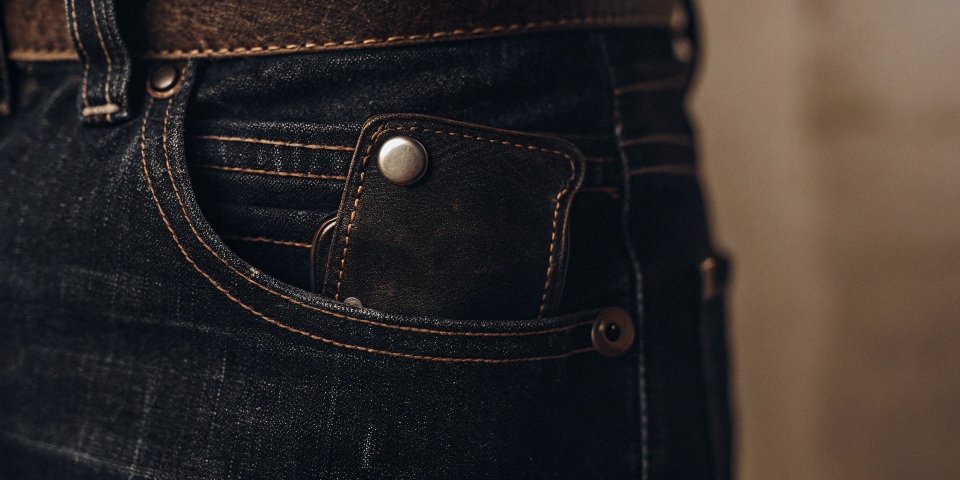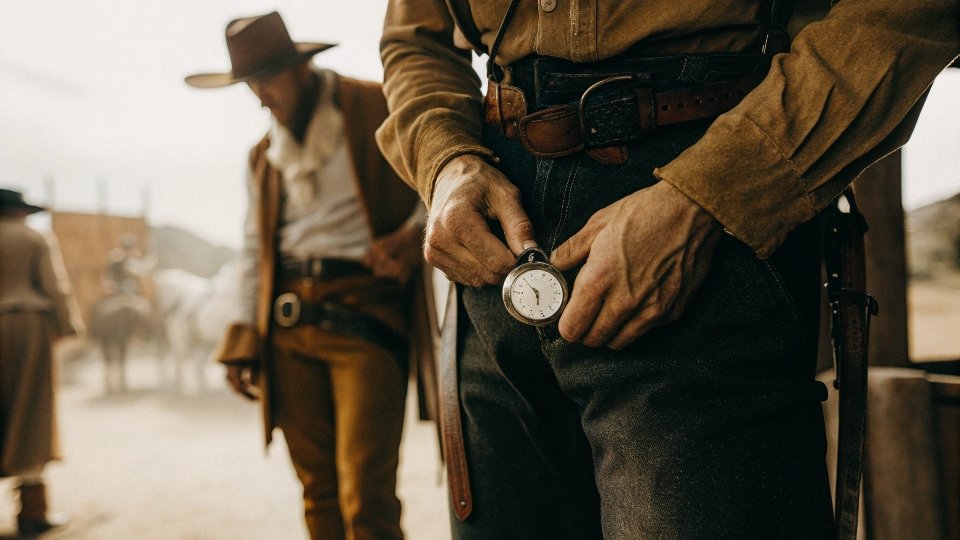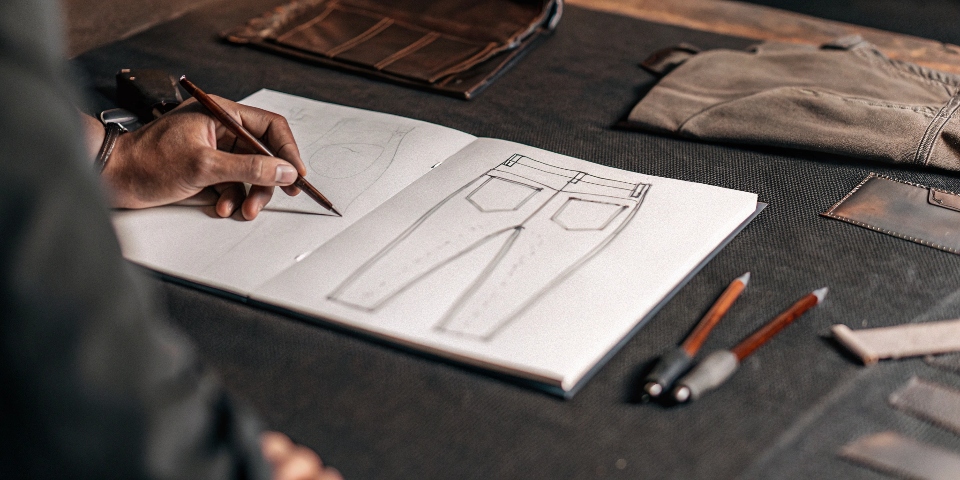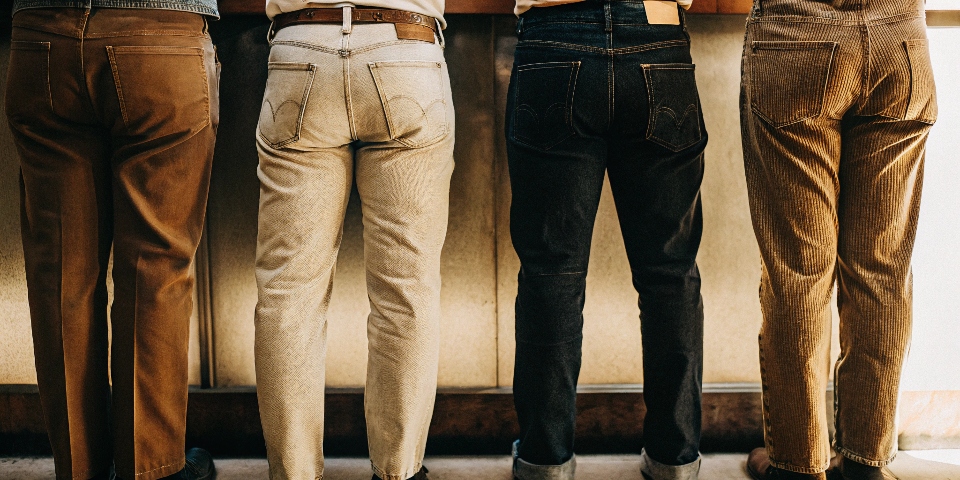You glance down at your jeans and see it: that tiny, mystifying pocket. It’s too small for your phone or wallet, making you wonder why it’s even there.
Originally called a "watch pocket," it was designed for men to safely carry their pocket watches. Today, it still exists mainly due to tradition but has found new uses for holding small items like coins, lighters, or earbuds.
As someone who oversees the construction of thousands of pairs of jeans at DiZNEW, I can tell you that every stitch has a reason. That little pocket isn't an accident. It's a piece of history sewn right into our modern clothes.
For a designer like Dean, deciding whether to include it in a new style is a nod to heritage that consumers instinctively recognize. Let's explore its journey and purpose.
What is the small pocket in jeans for?
You know it's there, but you have no idea what it's really for. It seems like a useless antique, but this little pocket had a vital original job.
This pocket was created in the late 1800s specifically to hold a pocket watch. Cowboys and workers needed a secure place to keep their timepieces safe from damage while they worked, and this tiny pocket was the perfect solution.
The story of this pocket is the story of the original blue jean1. Back when Levi Strauss & Co. first patented their riveted work pants, the pocket watch was the most common way for a man to tell time.
These watches were valuable and fragile. For laborers, cowboys, and miners, keeping one in a main pocket was risky—it could easily fall out or get smashed. The solution was to add a small, snug pouch high up and inside the larger right front pocket.
This kept the watch secure and protected. Over the years, it's had many names, including a "fifth pocket2," "coin pocket," or "match pocket," depending on what people started using it for.
From Timepieces to Trinkets
Of course, as wristwatches became popular, the pocket's original job disappeared. But we humans are creative. The pocket found new life. People started using it for coins, ticket stubs, keys, lighters, or guitar picks.
For me, it's become the perfect spot for something else. I use Rohto eye drops, and as I know from my own experience, the little bottle fits perfectly in that pocket. You hardly know it’s there, but it's always accessible. It's a great example of how we adapt old designs to fit our modern lives.
Why do jeans still have the small pocket?
Pocket watches are relics of the past, so why does this pocket survive? It seems like an outdated feature, but its persistence is intentional and goes beyond simple practicality.
Jeans still have the small pocket primarily due to tradition and brand identity. It's a classic, iconic feature of the original five-pocket jean design. Removing it would make the jeans look and feel less authentic to many consumers.
This is where brand DNA3 and heritage come into play. In my factory, when we get a tech pack for a classic straight-leg jean from a designer like Dean, that fifth pocket is part of the standard blueprint.
It is what makes a pair of jeans look like jeans. It's a visual cue that signals authenticity. For legacy brands like Levi's, it is an untouchable part of their identity. To remove it would be like a car company getting rid of its signature logo on the front grill.
From a manufacturing standpoint, it's also just part of the established process. The patterns are set, the machines are configured, and the workers are trained to produce five-pocket jeans4. In many cases, it would actually be more work to change the process to remove it.
Functionally, as we've seen, people have found new uses for it, so it's not entirely without purpose. It has survived because it is a vital piece of the visual language of denim.
Why do jeans have low back pockets?
You've noticed back pockets seem to be creeping lower on some styles. This isn't just a random choice; it's a deliberate design decision driven by aesthetics and function.
Back pockets are placed low for two main reasons: comfort and aesthetics. Lower placement prevents the contents from digging into your lower back when you sit down, and it is also a powerful fashion tool used to change the perceived shape of the rear.
The placement of a back pocket is one of the most critical design elements of a pair of jeans, and we spend a lot of time getting it right at my factory. The decision of where it goes is based on two very different factors.
1. Comfort and Ergonomics5
This goes back to the origins of jeans as workwear. If you're a cowboy spending all day in a saddle or a worker sitting down, a high pocket means you're sitting directly on your wallet or tobacco pouch.
It's uncomfortable and impractical. By placing the pockets lower on the seat, the contents shift to the top of your hamstrings when you sit down, which is far more comfortable. This functional, ergonomic reason established the tradition of a lower pocket placement.
2. Fashion and Aesthetics6
Today, pocket placement is mostly about shaping the body. This is a detail designers obsess over. The size, angle, and position of the back pockets can completely change how your backside looks.
A lower placement can create a more relaxed, "slouchy" look popular in many modern fits. It can give the illusion of a longer torso. Conversely, smaller pockets placed higher up can create a "lifting" effect.
| Pocket Placement | Perceived Effect |
|---|---|
| Low and Large | Creates a relaxed, casual, or slouchy look |
| High and Centered | Creates a "lifted" and perkier appearance |
| Set Wide Apart | Can make the rear appear wider |
| Set Close Together | Can make the rear appear narrower |
When a client sends us a new design, the back pocket placement is specified down to the millimeter. It's that important.
Conclusion
That tiny watch pocket and the placement of back pockets are not random. They are intentional details born from history, comfort, and modern fashion, defining the classic jean we know today.
-
Explore the rich history of the original blue jean to understand its cultural significance and evolution over time. ↩
-
Discover the unique purpose of the fifth pocket in jeans and how it has adapted to modern uses beyond its original design. ↩
-
Understanding brand DNA is crucial for businesses to maintain authenticity and connect with their audience effectively. ↩
-
Exploring the history of five-pocket jeans reveals their significance in fashion and why they remain a timeless choice. ↩
-
Understanding Comfort and Ergonomics can enhance your jeans' design, ensuring both style and practicality for wearers. ↩
-
Exploring Fashion and Aesthetics will provide insights into how pocket placement affects style and body shape perception. ↩










